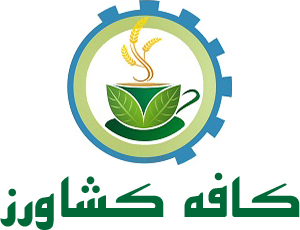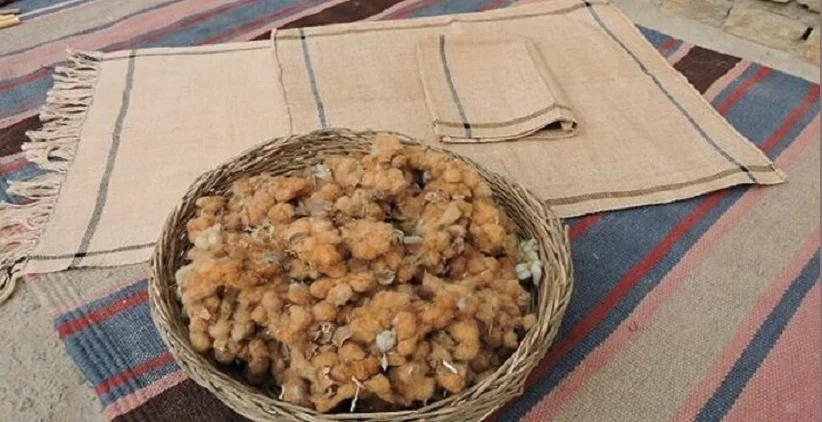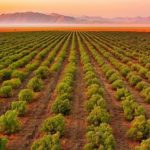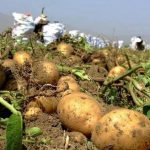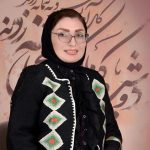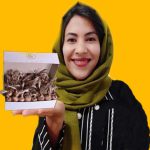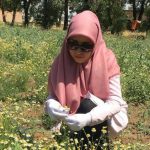Malle cotton is a type of cotton that is grown and processed in South Khorasan and Khosuf city. This type of cotton absorbs more heat and moisture than white cotton.
In Iran, apart from clothing, cotton has been used as medicine, and cotton oil has been used as softener, soap, lamp fuel, and animal feed.
During the Qajar period, cotton was the leading export after dry fruits, and compared to cotton and cotton textiles, it was considered one of the most important imported goods in this period.
Today, cotton production is of particular importance among rural and nomadic households for the production of all kinds of textiles, rugs, household goods and carpets. Because of its high strength, relatively low cost and bright color, cotton is used as a weft yarn in carpet weaving and occasionally for weft yarn.
In Iranian culture, since long ago, the cotton plant has been respected as a pure and valuable plant, because it lives from the mother earth and all its parts such as roots, seeds and fibers are used.
Malleh cotton
According to the high status of the cotton plant, which was mentioned before, this research is about a special type of cotton plant called Malleh cotton, which is being revived in the eastern regions of Iran, Khosef city, located in the South Khorasan province, which is more than 300 years old. It is old.
Since cotton cultivation requires a lot of water, with the reduction of regional water, the deterioration of agricultural profession and the policy of replacing strategic and low consumption crops such as crimson, jujube and saffron in South Khorasan province are proposed.
How to grow cotton
Cotton is grown in most of the lands of southern Khorasan province, which have clay and sandy soil. To grow cotton in this climate, it is necessary to prepare the land several months before planting.
For this reason, in the autumn and winter seasons until the middle of February, the cultivated lands are plowed deeply or relatively deeply until some pests come to the surface of the soil and are destroyed by cold, frost, humidity and other factors.
In addition, as a result of numerous winter rains, the land is softened and the plowing of fields is facilitated by agricultural machines.
In the next stage, the agricultural lands are irrigated so that the larvae are destroyed by freezing in the cold of winter and also to prevent drought stress at the beginning of the planting season by storing enough moisture.
It should be noted that the planting season for both types of white cotton and Malleh is from mid-March to early April.
A soft layer of soil is needed for cotton seeds to grow better. Therefore, in the months of March and April, before planting, the depth of the agricultural soil where the seeds are placed is softened by a disk tractor.
After the disking process, the ground is leveled using a trowel or a wooden roller, and the seed bed is compacted and ready for planting. Because cotton seeds have hairs that cause problems, farmers remove the hairs in the traditional way before planting.
So that the seeds do not stick together, they are rubbed on the ground with a mixture of water and ash or ordinary soil
Seed planting is also generally done by the traditional method of manual spraying. In this method, the bushes do not have specific distances and the farmers adjust the bushes at the same level as they want during weeding and thinning.
It is necessary to explain that the amount of cotton seed consumption per hectare depends on factors such as planting method (traditional or mechanical), soil type and seed type.
After planting the seeds, the land is subjected to immersion irrigation, and the planted and irrigated land is allowed to dry to some extent and become moist after a few days.
When the land reaches such a state, it is leveled by a wooden plank tied to an ox or a donkey, and after 60 to 70 days, the seeds sprout from the soil.
At this stage, they irrigate the land again and water the land once a week until the cotton seeds are fertilized.
Finally, after the growth period of the plant, which lasts about six months, in late September to early November, the fruit of the plant dries completely on the plant.
Evaluation of the physical and chemical structure of cotton
As it was mentioned before, the local residents insist on the heat-dissipating properties of cotton, as well as animal protein fibers such as camel hair and wool.
In addition, field studies show that this fiber cannot be spun with modern machines and is only spun and woven in the traditional way.
Based on this, it is necessary to evaluate the physical and chemical properties of Malleh cotton in comparison with white cotton grown in the same area, so that a scientific and logical answer can be given to the specific characteristics of cotton.
In the first stage of physical evaluation of these fibers, it should be noted that the appearance of Malleh cotton is similar to white cotton, but its color varies from light cream to brick brown.
Malleh fibers are similar to white cotton fibers, soft and gentle. But as a result of contact with the skin of the hand, unlike white cotton, a small and pleasant feeling of warmth is transferred to the body.
Microscopic images of Malleh cotton also show that the longitudinal and transverse cross-sections of these fibers are similar to white or ordinary cotton, and in other words, the longitudinal cross-section is similar to Malleh cotton.
The effective length of Malleh cotton is slightly longer than that of white cotton. Meanwhile, the average length of both samples is the same, and on the other hand, the degree of uniformity or distribution of fiber length in white cotton is higher than Malleh cotton.
Based on the obtained results, it can be acknowledged that the impossibility of spinning millet cotton with modern spinning machines is due to the uniformity of the length and percentage of short fibers in this type of cotton and parameters such as fineness, etc.
Also, the amount of moisture recovered for Malleh cotton fiber is slightly more than white cotton. This result can be related to the percentage of disordered or amorphous areas compared to regular or crystalline areas in the fiber structure.
The higher the percentage of irregular areas in the structure of a leaf, the higher the possibility of absorbing moisture between the molecular chains in that area.
In order to study the chemical structure and functional groups in the fiber structure, infrared spectroscopic analysis is used.
The heat-dissipating property of Malleh cotton compared to white cotton depends on two factors: its dark color, which helps to absorb more sunlight and generate heat, and secondly, there are more amorphous or irregular areas in the structure of Malleh cotton than white cotton.
This means that by increasing the amorphous areas in the fiber structure, the ability to trap more air is provided. Air also acts as a thermal insulator, and thus clothes made of Malleh cotton will have more warming power compared to white cotton.
On the other hand, the increase in irregular or amorphous areas (possibility of absorbing water molecules) or provides more moisture, and it seems that these amazing properties are the motivation of Malleh cotton, which has given it the titles of auspiciousness and sanctity, which is similar to what the inhabitants They want local harmony.
Source
Salimpur Abkanar, Samera and Amir Anvari Moghadam (1402) a study on the local knowledge of cultivation, spinning and traditional weaving of sacred cotton. Two scientific quarterly journals of Iranian indigenous knowledge.
